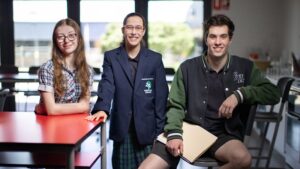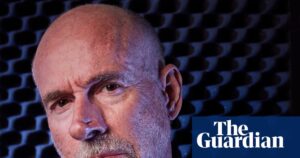
(Santa Barbara, Calif.) — In a groundbreaking study that challenges long-held assumptions about brain function and consciousness, researchers at the University of California, Santa Barbara, have discovered that only a small section of the intact corpus callosum is necessary to sustain full integration between the brain’s hemispheres. This finding could have significant implications for understanding neural resilience, particularly in the context of epilepsy surgery and brain injury recovery.
The research, published in the Proceedings of the National Academy of Sciences (PNAS), reveals that despite the corpus callosum being composed of approximately 250 million axons, only a minimal bundle is required to maintain synchrony between the brain’s hemispheres. “The corpus callosum relays signals and integrates information, unifying perceptions, coordinating movements, and enabling complex behaviors,” explained Michael Miller, a professor in UCSB’s Department of Psychological & Brain Sciences.
This discovery challenges decades of assumptions about split-brain function, particularly the effects of a severed corpus callosum, as observed in split-brain patients who have undergone callosotomy to alleviate severe epilepsy. Traditionally, it was believed that the degree of disconnection would directly correlate with the level of cognitive and functional impairment. However, the UCSB researchers found that patients with incomplete callosotomies functioned comparably to neurotypical individuals.
The Corpus Callosum, Cognition, and Consciousness
The role of the corpus callosum in cognition and consciousness has been a subject of interest since the 1960s, following pioneering experiments by neuroscientist Roger Sperry and his then-graduate student, Michael Gazzaniga. These studies demonstrated the phenomenon of disconnection syndrome, where specific cognitive functions are lateralized to one hemisphere, and the corpus callosum synchronizes information across hemispheres.
For instance, when an object is presented to a split-brain patient’s left visual field, the right hemisphere recognizes it, but the patient cannot vocalize what it is due to the severed connection to the speech-controlling left hemisphere. Despite this, the patient can still use the object appropriately with their left hand, illustrating the complex interplay of brain functions.
While callosotomies are now rare, network neuroscience has advanced with the advent of fMRI technology, allowing scientists to observe brain activity and synchronization during various tasks. This progress has paved the way for new insights into brain function and the potential for neural reorganization.
Unexpected Findings and Implications
The UCSB study, led by Miller and involving collaboration with neurologist Lukas Volz from the University of Cologne, focused on a small group of callosotomy patients. One patient, whose surgery was halted due to arterial congestion, retained about a centimeter of intact fibers in the posterior section of the corpus callosum. Surprisingly, this patient exhibited brain activity resembling that of a fully synchronized, neurotypical brain.
“We were really surprised there wasn’t any disconnection,” Miller noted. “The brain looked like a normal brain, fully synchronized.” This suggests that the brain can reorganize itself, rerouting connections through the remaining intact fibers, challenging classical models of callosal organization.
“This could be direct evidence that you don’t need the whole corpus callosum; you just need that critical section in the back of the brain to be connected in order to have that unified consciousness experience,” Miller said.
The study’s findings could redefine our understanding of consciousness, suggesting that tightly synchronized areas of the brain do not necessarily need direct connections. This adaptability could inform future models of consciousness and neural resilience.
Future Research and Exploration
Miller and his team are eager to explore these findings further, posing questions about the potential for reorganization if the corpus callosum is severed in different areas. They are also interested in conducting longitudinal studies to observe brain activity over time post-surgery.
“We’ve actually started on some of those experiments now,” Miller said, emphasizing the importance of tracking brain reorganization within the first year after surgery.
The research involved contributions from a diverse team, including Selin Beker, Jessica M. Simonson, Henri Etel Skinner, and Barry Giesbrecht at UCSB; Theresa Paul and Valerie M. Wiemer at the University of Cologne; Johanna Hopf, Anna Rada, Friedrich G. Woermann, Thilo Kalbhenn, and Christian Bien at Bethel Epilepsy Center in Bielefeld, Germany; and Olaf Sporns at Indiana University.
As the scientific community continues to unravel the complexities of the brain, this study marks a significant step forward in understanding how minimal neural connections can sustain a unified consciousness, offering hope for advancements in medical treatments and theoretical models alike.






